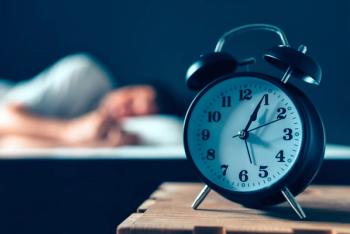
TBI Linked to Sleep Disorders
Patients who experience seizure 24 hours after stroke onset may be at increased risk for death, according to Angela Rackley, MD, a clinical neurophysiology fellow in epilepsy, and coresearchers at the University of Cincinnati. Rackley presented an abstract on the incidence of seizures within 24 hours after acute stroke at the annual meeting of the American Epilepsy Society in San Diego this past December. She and colleagues found a higher 30- day mortality rate among patients who had a seizure within hours of stroke compared with patients who did not experience poststroke seizure.
Persons with a history of mild traumatic brain injury (mTBI) are more likely than others to have sleep timing disorders, according to a study by investigators from the University of California, San Diego (UCSD) and Sheba Medical Center in Tel Aviv, Israel. Although many of these patients have difficulty in falling asleep, they may not be experiencing primary insomnia but a circadian rhythm sleep disorder (CRSD). "The frequency of CRSD in this study is considerably higher than the rate of these disorders among people attending sleep clinics for insomnia, which is 7% to 10%," reported lead author Liat Ayalon, PhD, a fellow in the Department of Geriatrics at UCSD.
Ayalon and coinvestigators followed up on data suggesting that 40% to 65% of patients with mTBI complain of insomnia and sought links between symptoms and such CRSDs as delayed sleep phase syndrome (DSPS) and irregular sleep-wake pattern (ISWP). Using questionnaires, polysomnography, and actigraphic sleep-wake cycle monitoring, the research team diagnosed CRSD in 15 (36%) of 42 patients who complained of insomnia post-mTBI. Of these, 8 had DSPS and 7 had ISWP, confirming that CRSDs are a common sequela of mTBI.
Interestingly, the incidence of DSPS and ISWP in this mTBI population differed from that found in general clinical populations of patients with CRSD, the investigators noted in their study published in the April 3 issue of Neurology. Although DSPS and ISWP incidence was equal in the mTBI subpopulation studied by Ayalon and coinvestigators, DSPS has been reported to be the overwhelmingly more common CRSD seen in sleep clinics, affecting 85% of patients with CRSD, whereas the incidence of ISWP in this milieu is only 2% (see Dagan Y, Eisenstein M. Circadian rhythm sleep disorders: toward a more precise definition and diagnosis. Chronobiol Int. 1999;16:213-222).
Ayalon noted that correct diagnosis of these patients is important because, although hypnotic drugs may help these patients sleep, they don't solve the circadian rhythm dysregulation. Melatonin therapy, light therapy, and other interventions that help normalize the sleep-wake cycle are more appropriate for these patients, according to Ayalon.
She added that because CRSDs contribute to cognitive and psychological problems, appropriate intervention is of that much more benefit to patients with a history of mTBI. Treatment of the sleep disorder may alleviate other symptoms associated with mTBI.
For more information on this study, see Ayalon L,Borodkin K, Dishon L, et al. Circadian rhythm sleepdisorders following mild traumatic brain injury. Neurology. 2007;68:1136-1140.
Newsletter
Receive trusted psychiatric news, expert analysis, and clinical insights — subscribe today to support your practice and your patients.




